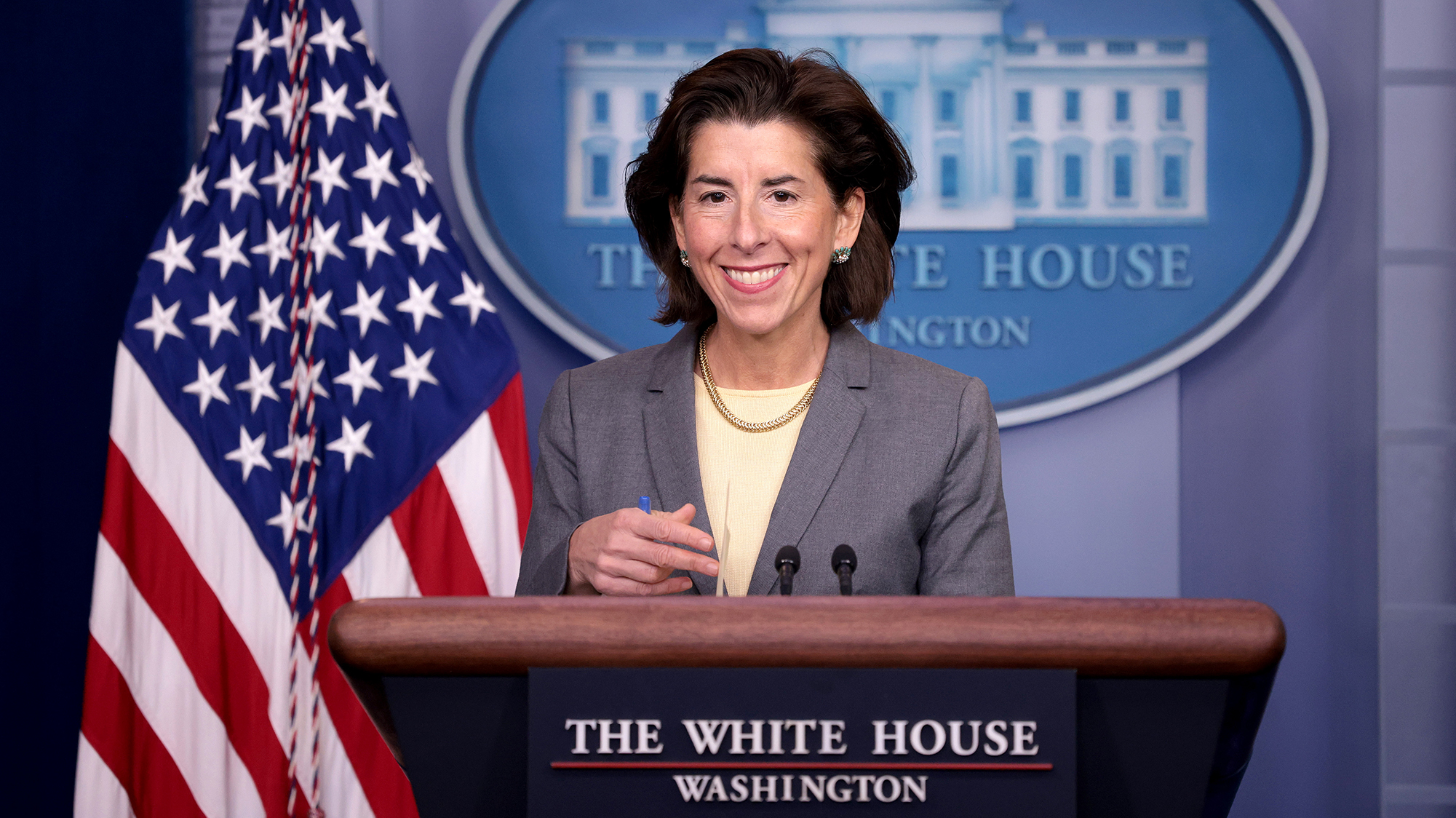Commerce's Gina Raimondo: Infrastructure Bill Can Achieve Universal Broadband
Says affordability is as important as access and equity must be central

In a press conference Tuesday (Nov. 9) on the $65 billion in broadband investments in the just-passed infrastructure bill, Commerce Secretary Gina Raimondo said those investments will be sufficient to achieve universal high-speed broadband.
But she also said Commerce has to make sure the money is not spent to overbuild, "which means we'll have to work very closely with the FCC and using their maps to make sure that we focus the money where broadband doesn't exist now," and that broadband is affordable, equitably distributed, and built out by a diverse workforce. (The FCC has gotten money from Congress to improve its broadband availability maps, which both Congress and the FCC agree need work.)
Raimondo was a special guest at the White House's daily briefing.
"President Biden has set a very ambitious goal for his administration that we must connect all Americans -- all Americans, regardless of where they live -- to high-speed, affordable internet," Raimondo said, adding "and thanks to the passage of the bill, we will be able to accomplish just that."
Also: Survey Says Voters Back Broadband Subsidies
The legislation includes $65 billion for that universal broadband effort, with about $48 billion of that going to Commerce's National Telecommunications & Information Administration to hand out.
She said that affordability was just as important as access, arguing that broadband availability does a family no good if they can't afford it. To make sure they can, she said, fund recipients will have to offer a low-cost plan, as well as "provide federal funding for broadband services to low-income families; requiring providers to be transparent about pricing to help families do comparison shopping for services where they have competitive options."
The smarter way to stay on top of the multichannel video marketplace. Sign up below.
Raimondo also signaled equity would be top of mind. "Broadband is the gateway to economic opportunity," she said, "and so, in order to open that gateway, we're putting equity at the center of everything we do," with investments that are "equitable and just." She said that will be an implementation challenge, but said it was "necessary" to meet that challenge.
Each state will get $100 million, which they will give out in grants, with the rest of the money allocated to the unserved based on the differing needs of each state, she said. For example, she said, Rhode Island has no rural contingent, so the money will be more focused on affordability and inner city access. Contrast that with New Mexico, she said, where 50% of Tribal lands don't have broadband access.
Also: FCC Approves Boeing Broadband Application
She said there would have to be a "tremendous amount of federal oversight and transparency." Speaking to transparency, she pointed out that each state has to put its plans for getting broadband to everyone in the state online "for everyone to see." That includes NTIA, which will "evaluate that plan, adjust it, [and] provide technical assistance to make sure at the end of the day we hit the goal."
Raimondo said it will be "well into next year" before the projects being funded could get underway, saying Commerce wanted to get the money out quickly but "in a quality way." But she also said laying fiber in mountainous areas "could take years."
Raimondo said some of the money will be used for workforce training so there are enough people for the work required, which she said was not currently the case. The upside of that is money will be going to diversify the workforce of electricians and technicians deploying fiber. "[T]he folks that we train ought to look like America. Right?," she said.
Contributing editor John Eggerton has been an editor and/or writer on media regulation, legislation and policy for over four decades, including covering the FCC, FTC, Congress, the major media trade associations, and the federal courts. In addition to Multichannel News and Broadcasting + Cable, his work has appeared in Radio World, TV Technology, TV Fax, This Week in Consumer Electronics, Variety and the Encyclopedia Britannica.

